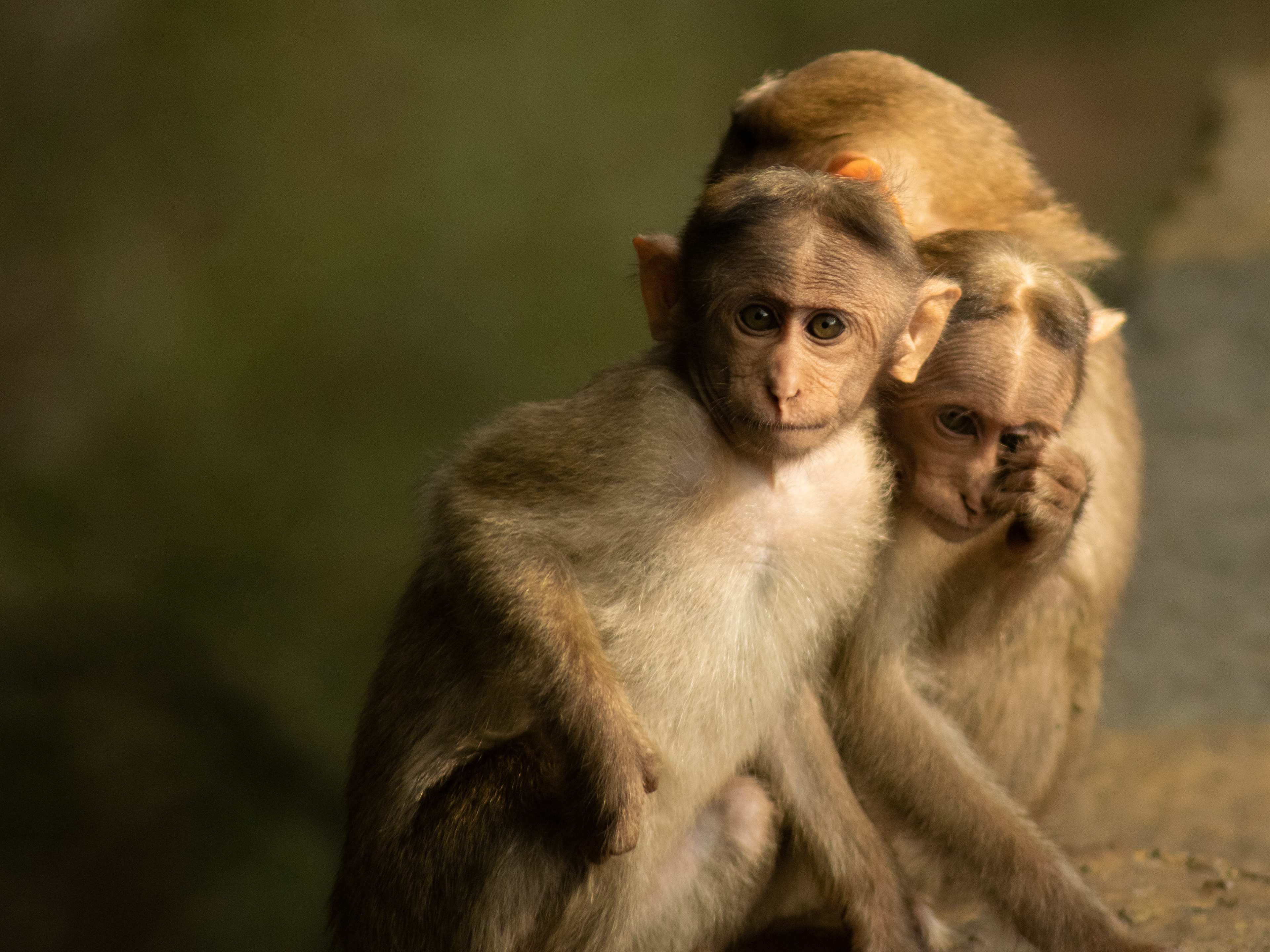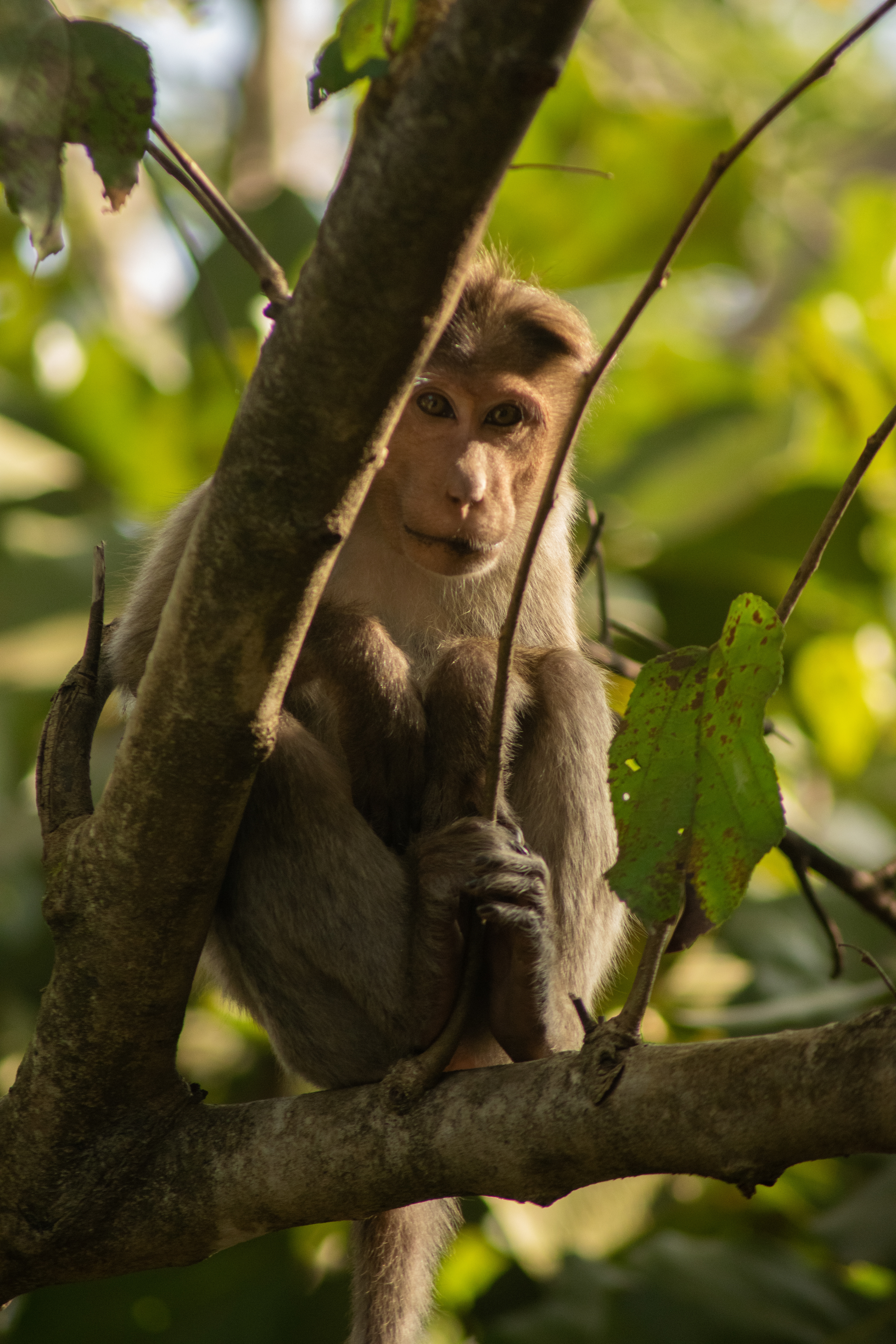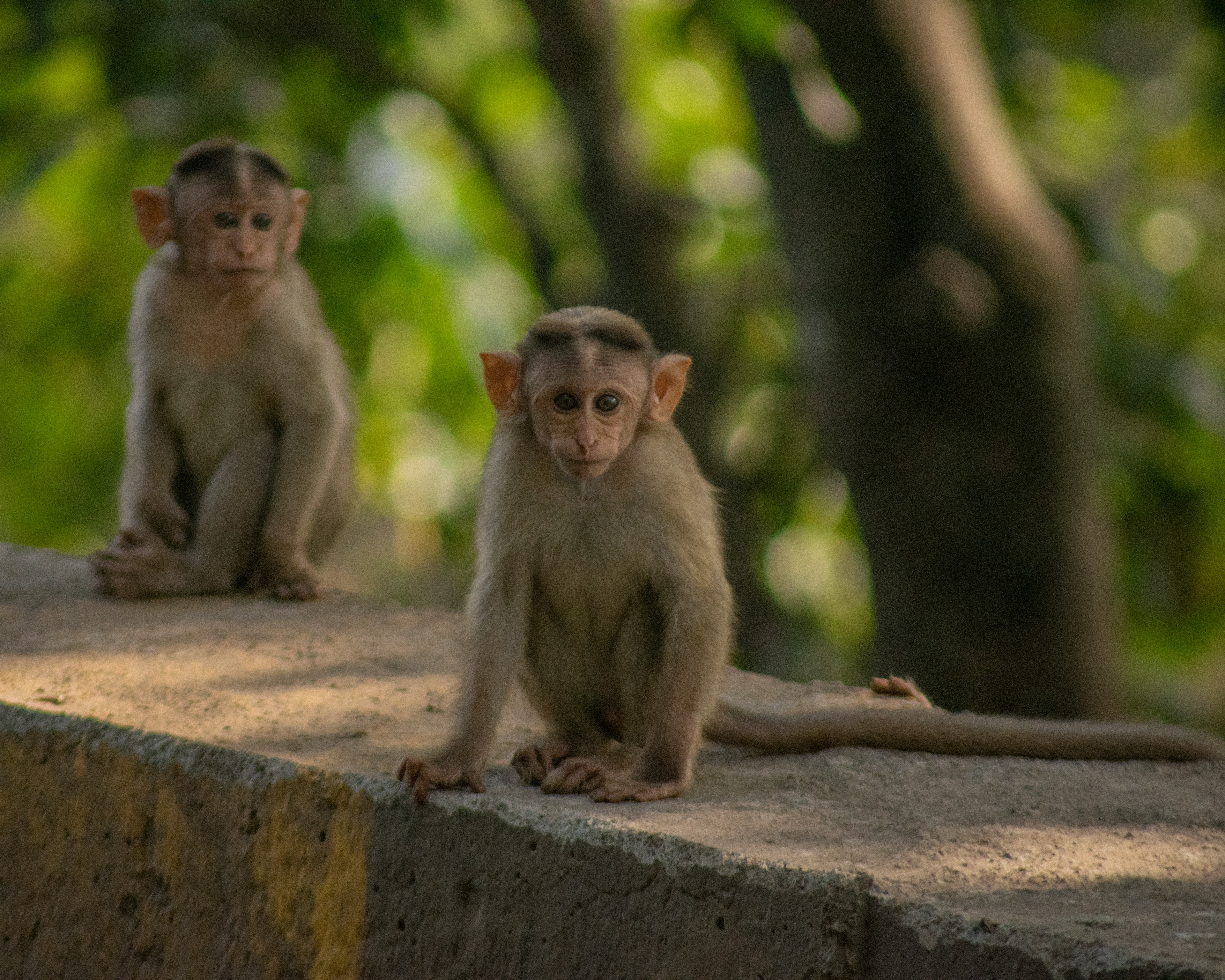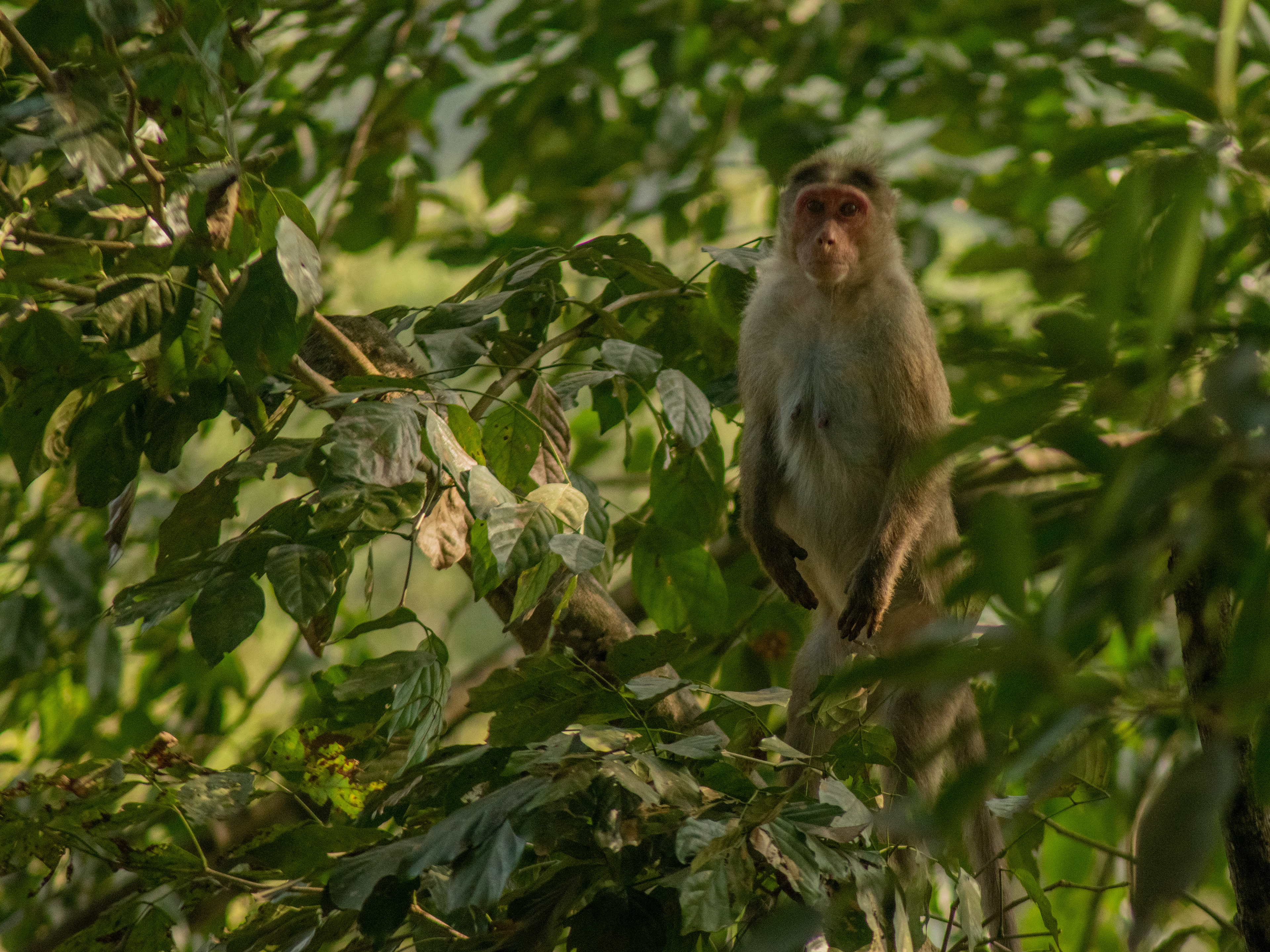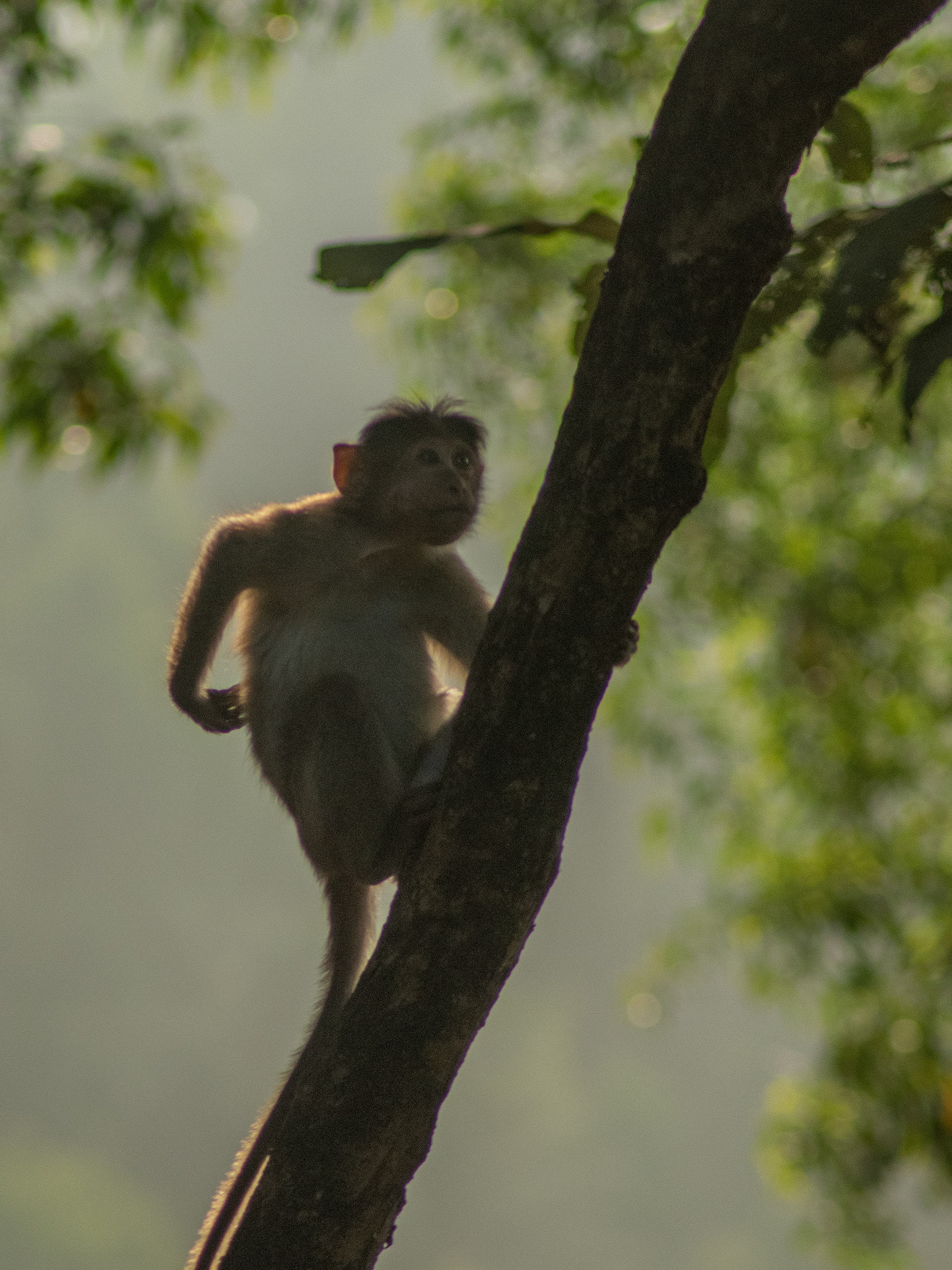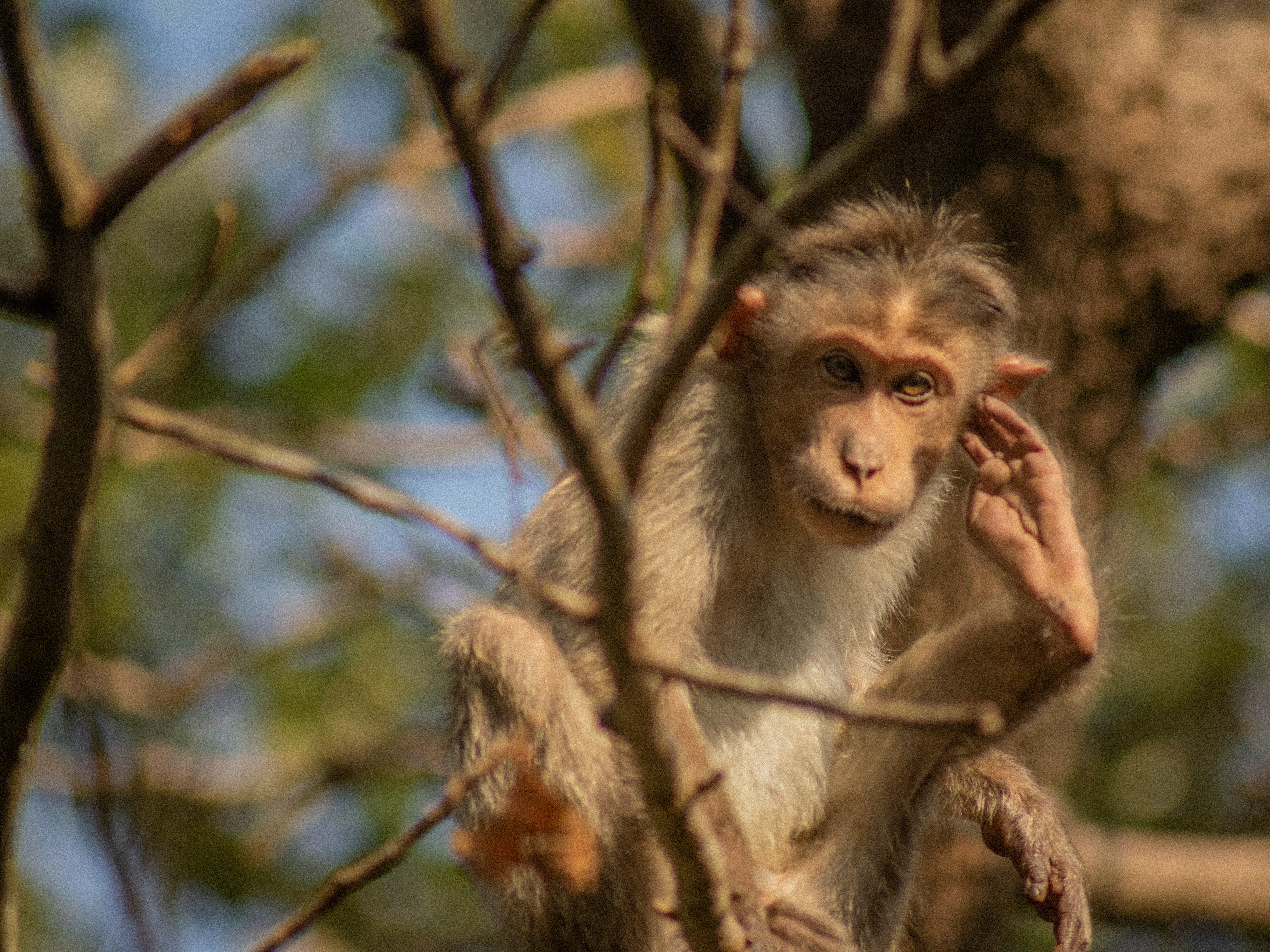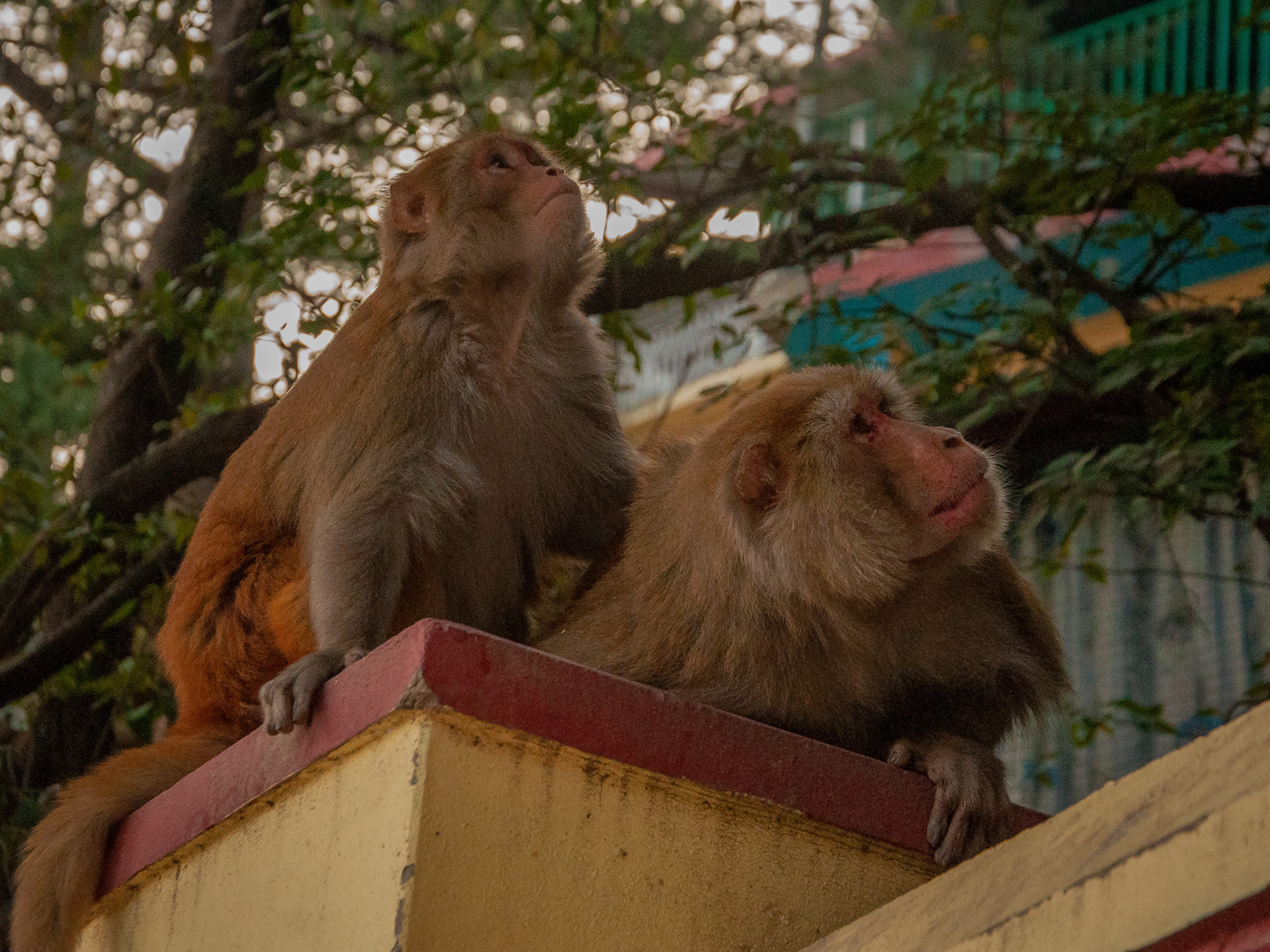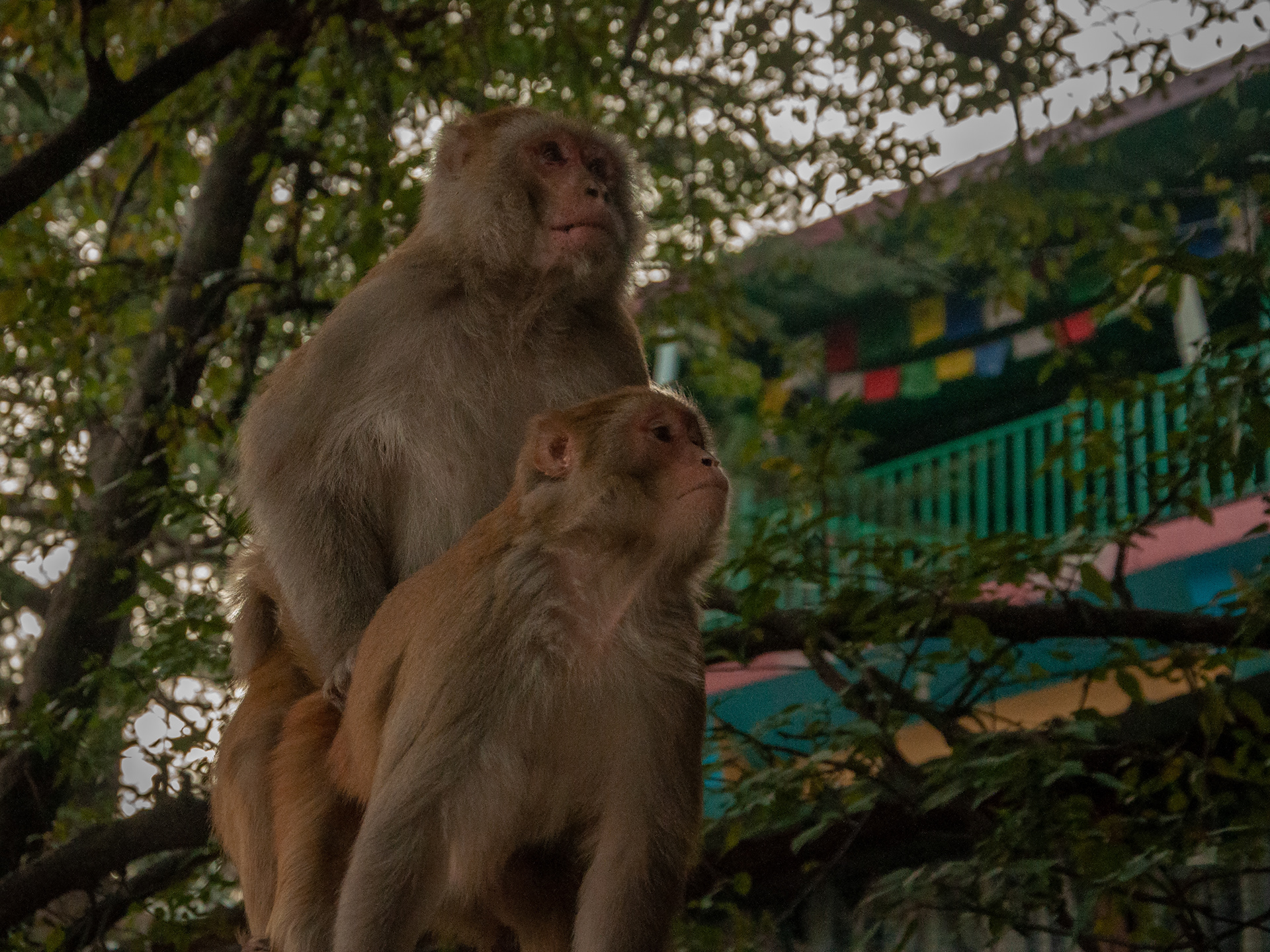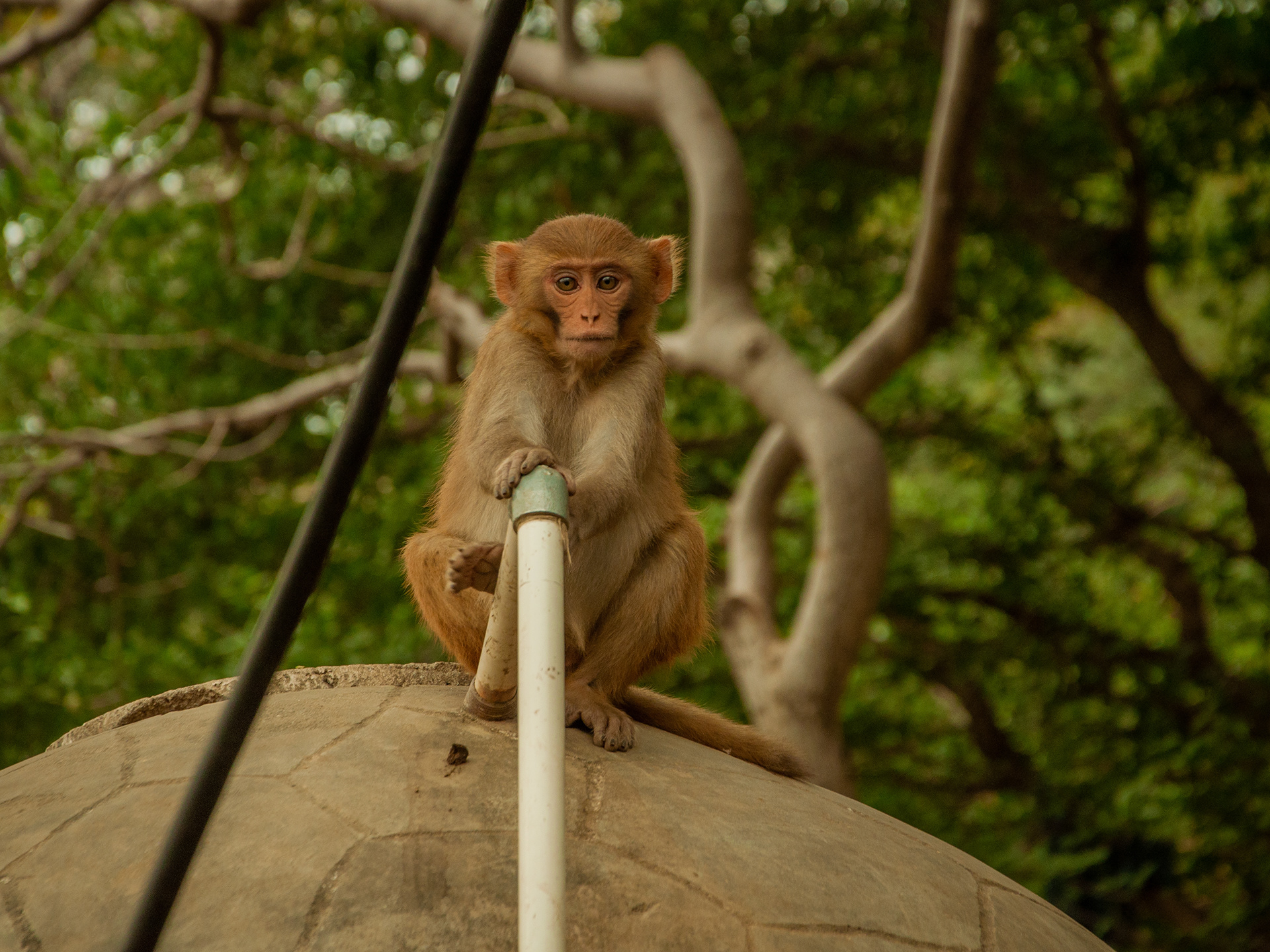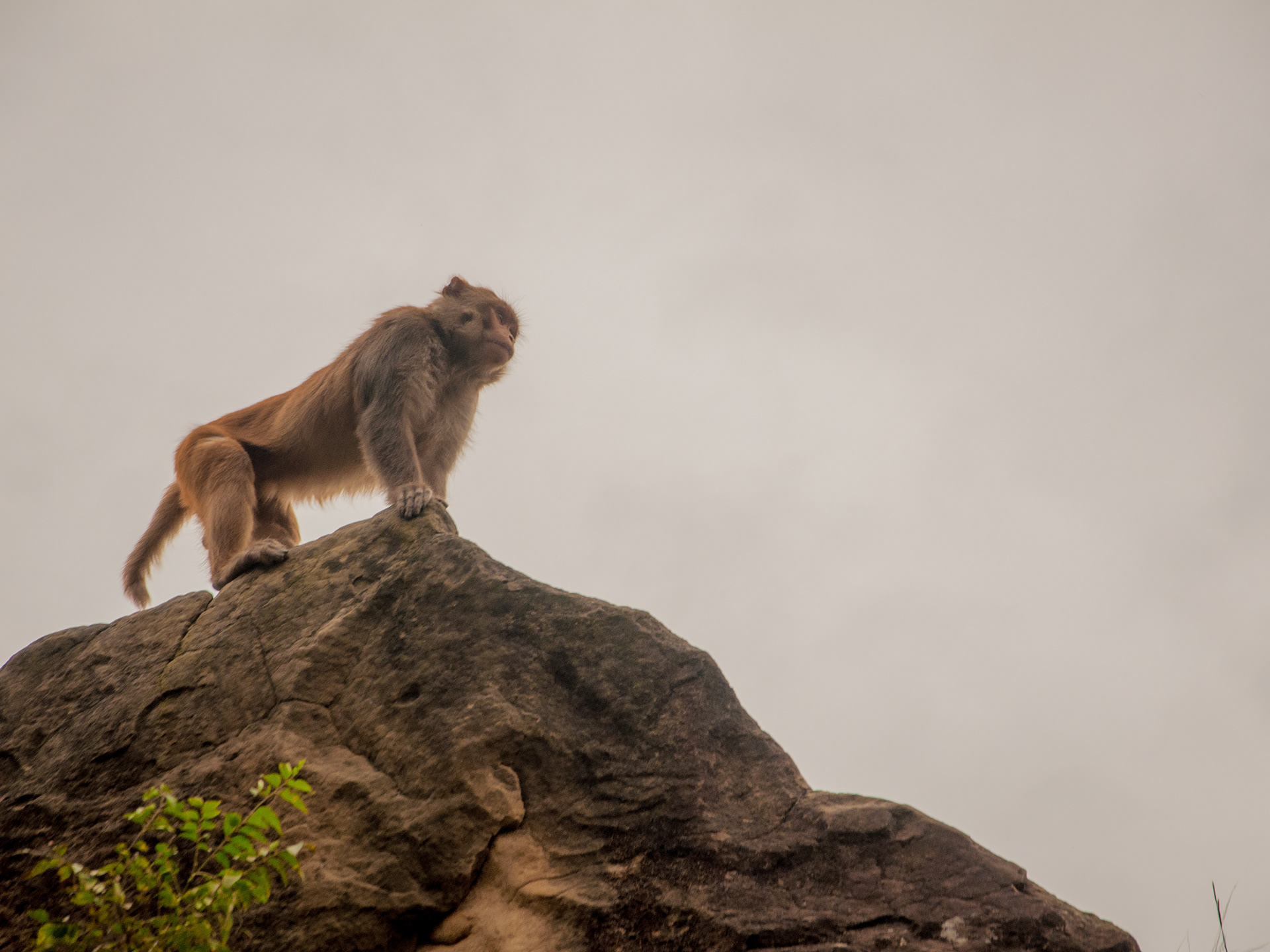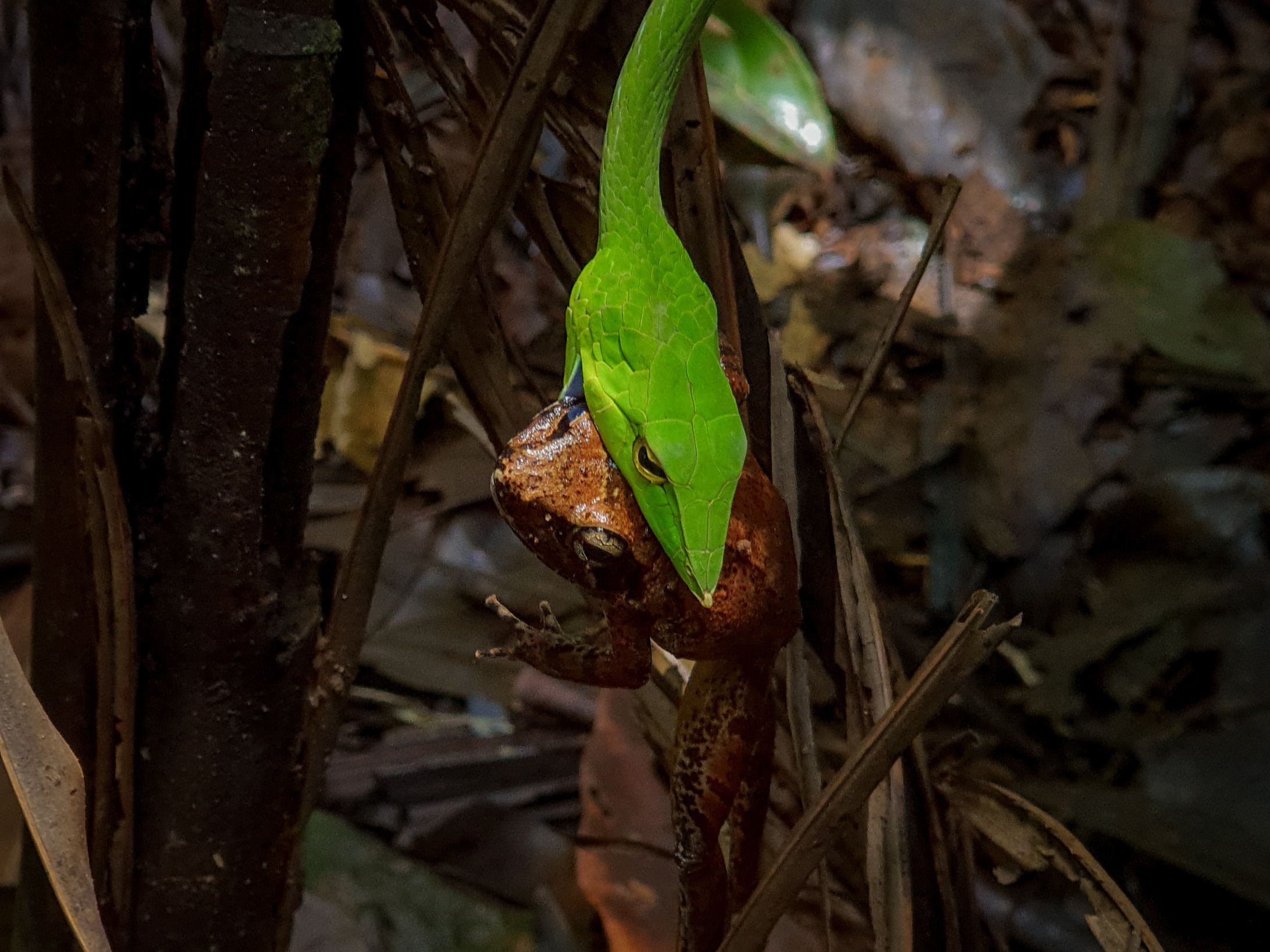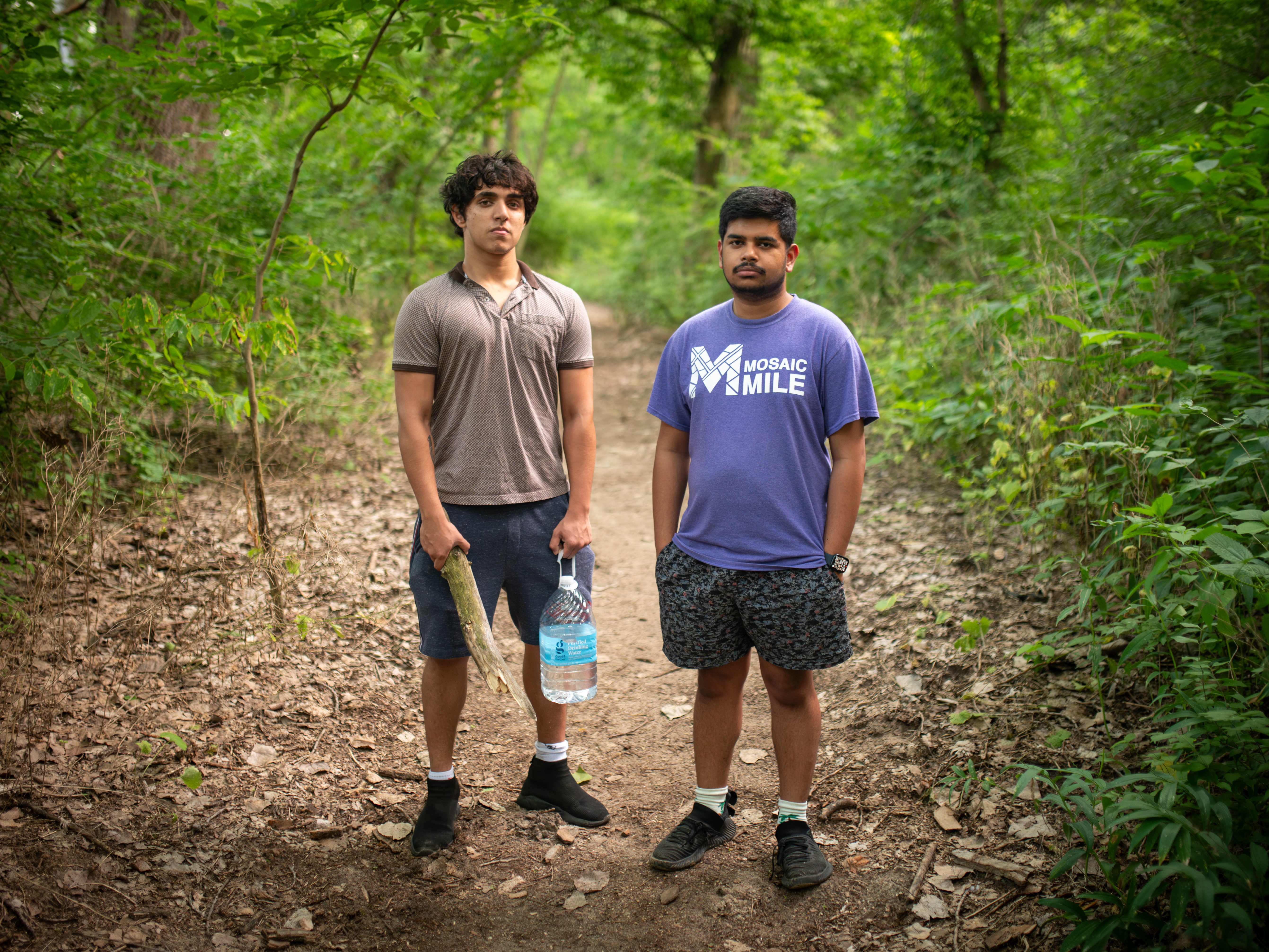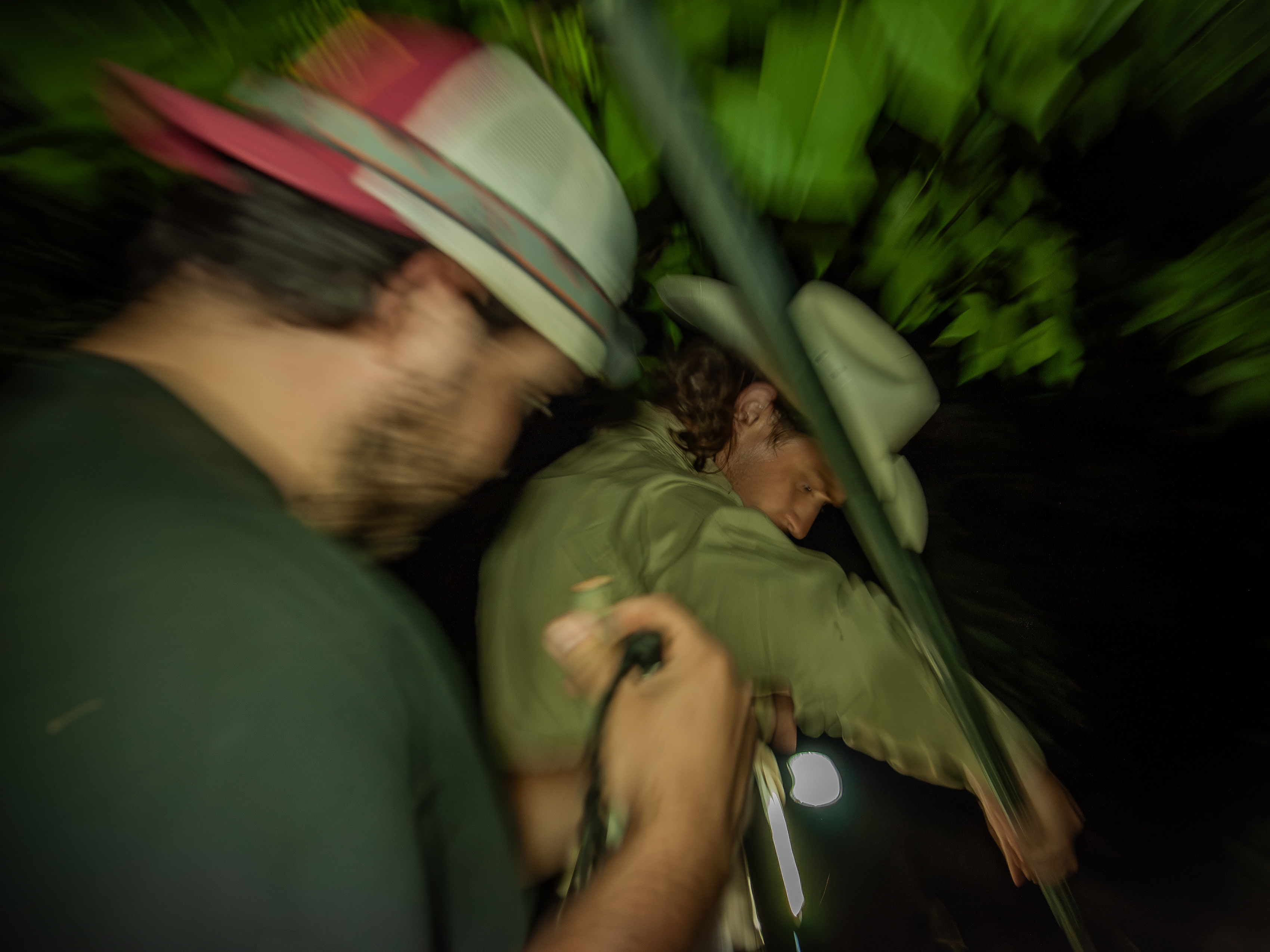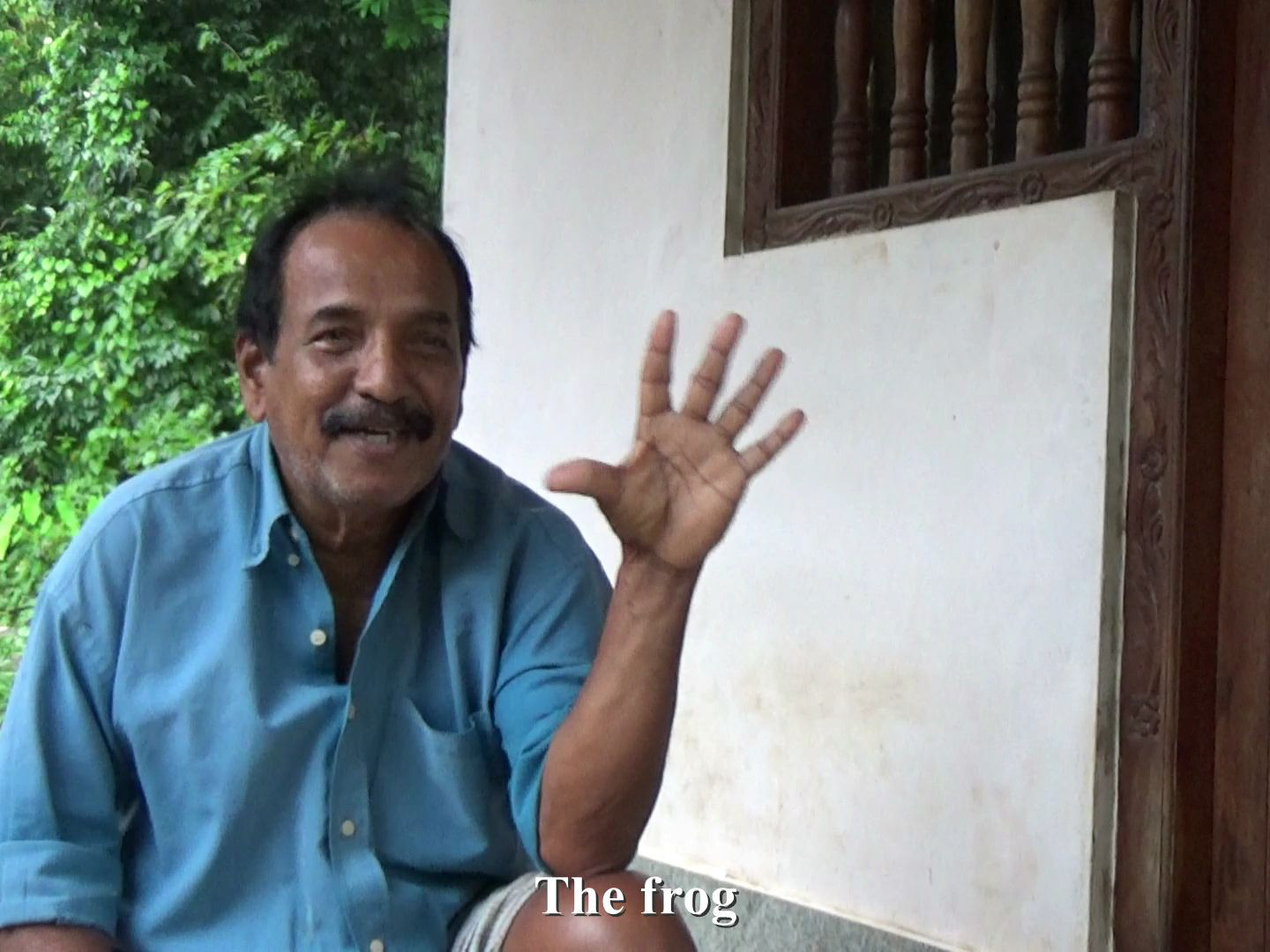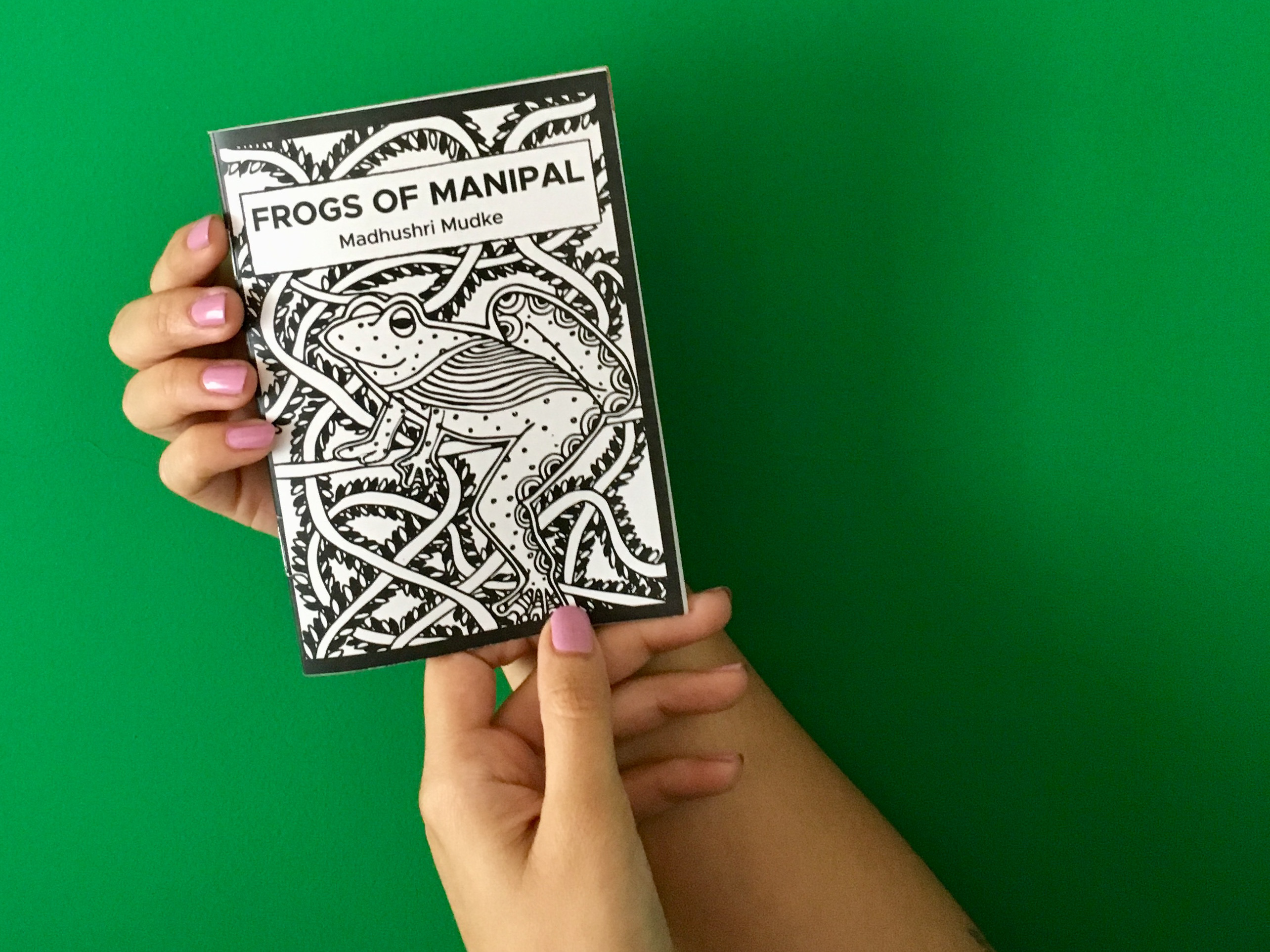A Bonnet Macaque (Macaca radiata) mother and child.
A short documentation of the Bonnet Macaque (Macaca radiata) going through a pack of biscuits on film.
The Bonnet Macaque eating a biscuit out of the Parle 20-20 packet.
A Bonnet Macaque holds on to a small branch while perching on a tree with its feet. This shows the opposable big toes at work - an essential adaptation for life in the canopy for these monkeys.
I cannot think of a better scene than a Bonnet Macaque reminiscing the best moments of its life! This Macaque has stored some food in its cheek pouch, as can be seen on the left of its face in this photograph. The troop was not feeding at this spot, so I can only assume that the Macaque got this food from somewhere else and was waiting for the right time to get to the saved food. He was praying before the meal as a mark of gratitude, perhaps?
A pair of Bonnet Macaques (Macaca radiata) mating on the overgrowth of a tree on the edge of a bridge above a stream in the jungle while other Macaques from the group watch a car cross the bridge.
A pair of Rhesus Macaques (Macaca mulatta) mating on the compound wall of a house in Dalhousie, Himachal Pradesh. The Tibetan prayer flags on the house made for a great background to the scene of this contemplative pair. They were observing the humans passing by while engaging in the act. They even looked into my lens for a brief moment before moving away, with such choreographed coordination!
Local community members outside a Shiva Temple in Himachal Pradesh. Religion and religious places, I observed, play quite a role in the multispecies lives of the primates, with so many temples and pilgrims here.
A female Rhesus Macaque digs through a Koodadaan - a Garbage Can - outside of a fun fair near the Chamunda Devi temple. I was lucky enough to be there at the right time to spot this - however, I was unfortunately not carrying my camera at the time. I had to click this frame on my phone, which caused the low-light to dictate the quality of the photograph. I'm still happy with the frame, though.
A screenshot of a photo of a Hanuman Langur (Semnopithecus sp.) on my Facebook timeline from 2014. My fascination with the species, and Wildlife, in general, dates all the way back!
A Bonnet Macaque from Chorla observing the back of its own hand, as it holds a branch with it.
